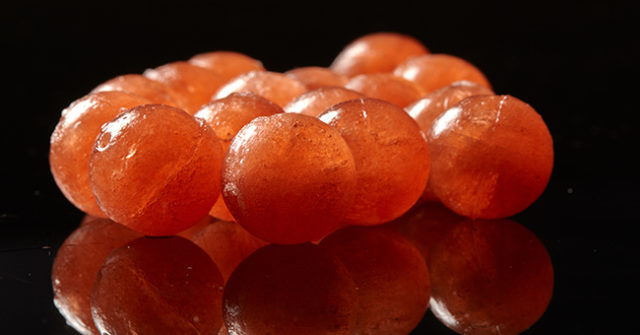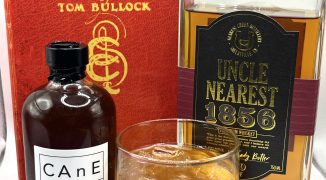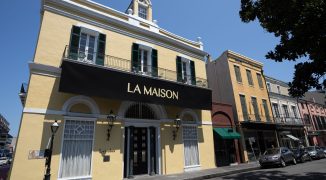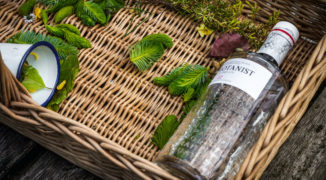It may seem a negligible detail, but ice can make all the difference in a cocktail. In fact, the right kind of ice not only elevates a drink’s attractiveness and enhances flavor profiles, but it can also bump up the actual value of a drink: the Aviary’s Micah Melton estimates that increase can range from $2 to $5. A thoughtful presentation also makes for a social media photo op, which equates to free publicity, when you think about it. Sip on that for a second.
Aside from allowing you to charge more per drink — and landing you in more Instagram feeds — a cocktail that wows is also a sign you’re dedicated to innovation and quality. That can go a long way for your personal brand and business.
“Ice is the foundation of virtually every drink we make and, in most bars, it’s typically taken for granted or overlooked completely,” says Tony Abou-Ganim, a Las Vegas mixologist and author of “The Modern Mixologist.” “To say great ice is necessary to craft a great cocktail is really an understatement.”
To up your cocktail presentation, familiarize yourself with the ice basics and don’t be afraid to push yourself creatively when it comes to the cold stuff.
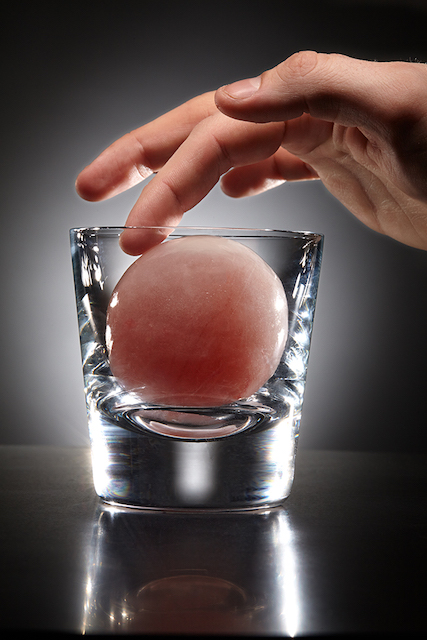 Craft ice is the cocktail equivalent to diamonds. Clarity and cut matter, and so does the consideration that goes into size. For example, large sphere of ice is good for a whiskey based drink — one that needs to stay cool without getting quickly diluted.
Craft ice is the cocktail equivalent to diamonds. Clarity and cut matter, and so does the consideration that goes into size. For example, large sphere of ice is good for a whiskey based drink — one that needs to stay cool without getting quickly diluted.
Clarity, cut and size
Consider fine ice the cocktail equivalent to diamonds. Clarity and cut matter, and so does the consideration that goes into size.
Clarity: In the same way a quality diamond is free of inclusions, top-notch ice is crystal clear. To get that cloudless effect, you need to start with pure, boiled water and the water must be frozen slowly to allow more time for bubbles to escape. There are special freezers that better allow you to do this, but they can be costly and take up a lot of space.
Cut: The cut, or shape, of your ice is mostly about presentation. For example, you may want a solitary cube, cylinder or cone that fits perfectly into your barware, or maybe you want to throw in jewel-shaped ice to fancify a cocktail. You could also go with hand-chipped ice, or other interesting designs, to enhance visual appeal.
Size: Size (not to be confused with cut) arguably matters most of all when it comes to cocktail ice. And no – bigger isn’t always better. It all boils down to dilution.
“It is critical to use the right kind of ice for the right kind of cocktail,” says Ben Potts, bar manager and co-owner of Miami’s Beaker & Gray. “If you’re trying to maintain a dilution level and a temperature, you want to use a large block with a small surface area to volume ratio.”
For example, a large sphere has more surface area and therefore melts less quickly, making it ideal for a whiskey pour that should stay cool, but not quickly dilute. Contrarily, “if you want something to chill very quickly and dilute in a controlled manner, use crushed or pellet ice,” says Potts.
“[We] have large cube ice for Highballs, single 2×2 cubes for spirit forward drinks such as a Negroni or straight spirit on the rock, but you’ll also notice a great mixologist will have crushed or pellet ice for a Mojito or Julep, cracked ice for a Mai Tai and shaved ice for a Frappe,” adds Abou-Ganim.
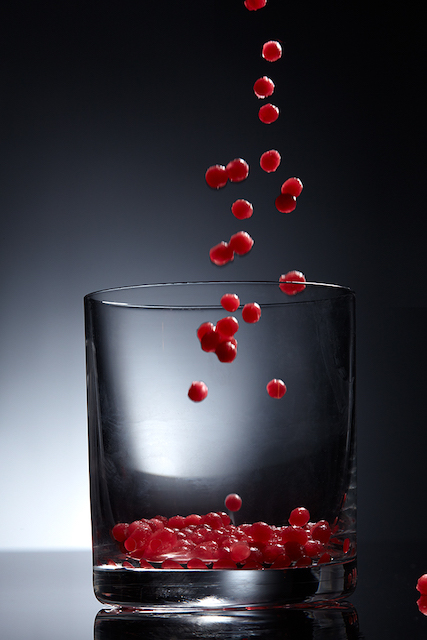 At The Aviary, bartenders use ice as a means to innovate in the cocktail industry, rather than just replicating what’s been done before. But even if you can’t manage to make craft ice in-house, there are more and more businesses offering ice as a service.
At The Aviary, bartenders use ice as a means to innovate in the cocktail industry, rather than just replicating what’s been done before. But even if you can’t manage to make craft ice in-house, there are more and more businesses offering ice as a service.
Hiring out for ice
Creating beautiful, blemish-free, perfectly-sized ice isn’t an easy feat. In fact, it can turn into a time-consuming chore for which busy bartenders simply don’t have the time.
To have their ice and serve it, too, many bars now contract with artisanal ice businesses. These companies specialize in ice, specifically, and can make and deliver pretty much anything your cocktail desires. Because they have all the appropriate tools, and because their time is dedicated explicitly to the ice craft, the quality is superior to the “do it yourself” alternative.
“[Artisanal ice businesses] are growing at a rapid pace in the US,” notes Potts. “New York and Chicago both have multiple business supplying ice, and Miami has a few as well.”
He says there are also some luxury ice delivery brands, but they’re very expensive and not practical for commercial use. They may be more ideal for special events, intimate parties and other occasions where budgets aren’t as constrained and the incentive to impress is high.
For standard artisanal ice delivery services, you can expect to pay between .50 cents and $1 per cube — or sphere, or jewel, or whatever shape you prefer.
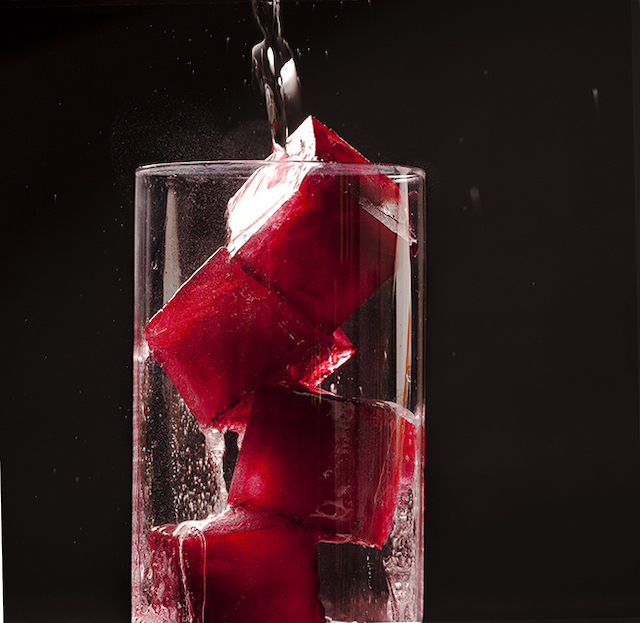 Using fresh fruit juice to make ice cubes can add a delectable contribution to the flavor and character of the cocktail as the cubes begin to melt.
Using fresh fruit juice to make ice cubes can add a delectable contribution to the flavor and character of the cocktail as the cubes begin to melt.
6 Interesting ways bartenders are using ice
Flavored ice: “I’ve done everything from cinnamon and spice-flavored ice to fruit flavored and fresh herbs. At the Rickey in NYC, we do a coconut water ice block. As it slowly melts, it transforms The Cartel cocktail — which is a rum and pineapple cocktail — into almost a piña colada flavor.” — Johnny Swet, Mixologist for The Rickey at Dream Midtown in New York City
Juice as ice: To add even more flavor, try freezing actual fruit juice. “The use of fresh juices to make ice cubes impacts the overall flavor and character of a drink as they melt,” says Abou-Ganim.
Infused ice: Freezing fresh fruit pieces, herbs, edible flowers and other ingredients within your ice not only looks cool, it doubles as a garnish. “I like to freeze ingredients that are in the cocktail,” says Star Hodgson, Mezcal El Silencio Brand Ambassador. For example, she’ll freeze clove or a piece of orange peel into an ice ball or square “to accentuate what’s already in the drink,” and to add more flavor dimension.
Colorful ice: “Using food coloring to impart color into ice cubes adds a visual contrast to drinks,” says Abou-Ganim.
Ice caps: Micah Melton, beverage director at Chicago’s The Aviary, says he’s seen ice used as a cap on top of a drink. Think of a disk-like shape or something similar that’s placed above the drink. “You can then serve a composed garnish of a bite” on top of the cap, he notes.
Inside-out ice: “I’ve seen people do it, and I’ve done it,” says Swet. “You make large ice spheres out of big bowls that you fuse together, and actually make a punch, or shareable large format cocktail, to put inside. Then you present [the cocktail] in a bowl and smash it with a hammer. Very dramatic, but cool.” You can also do this on a smaller-sized scale within a whiskey ball, or similar.
Some other ideas we’ve seen include hollowed ice, shaped ice, hand-carved ice, ice with logos, smoked ice, dry ice and freezing entire cocktails. Really, you’re only limited by your imagination.
“Ice is the best way we can push our cocktails forward,” says Melton, adding that something as simple as a flavored ice cube can add an innovative twist to an otherwise standard cocktail that’s been making the round for over a century. His goal, and what he advocates for bartenders far and wide, is to “explore and try to be the next generation of drink makers instead of mimicking the last four generations.”


